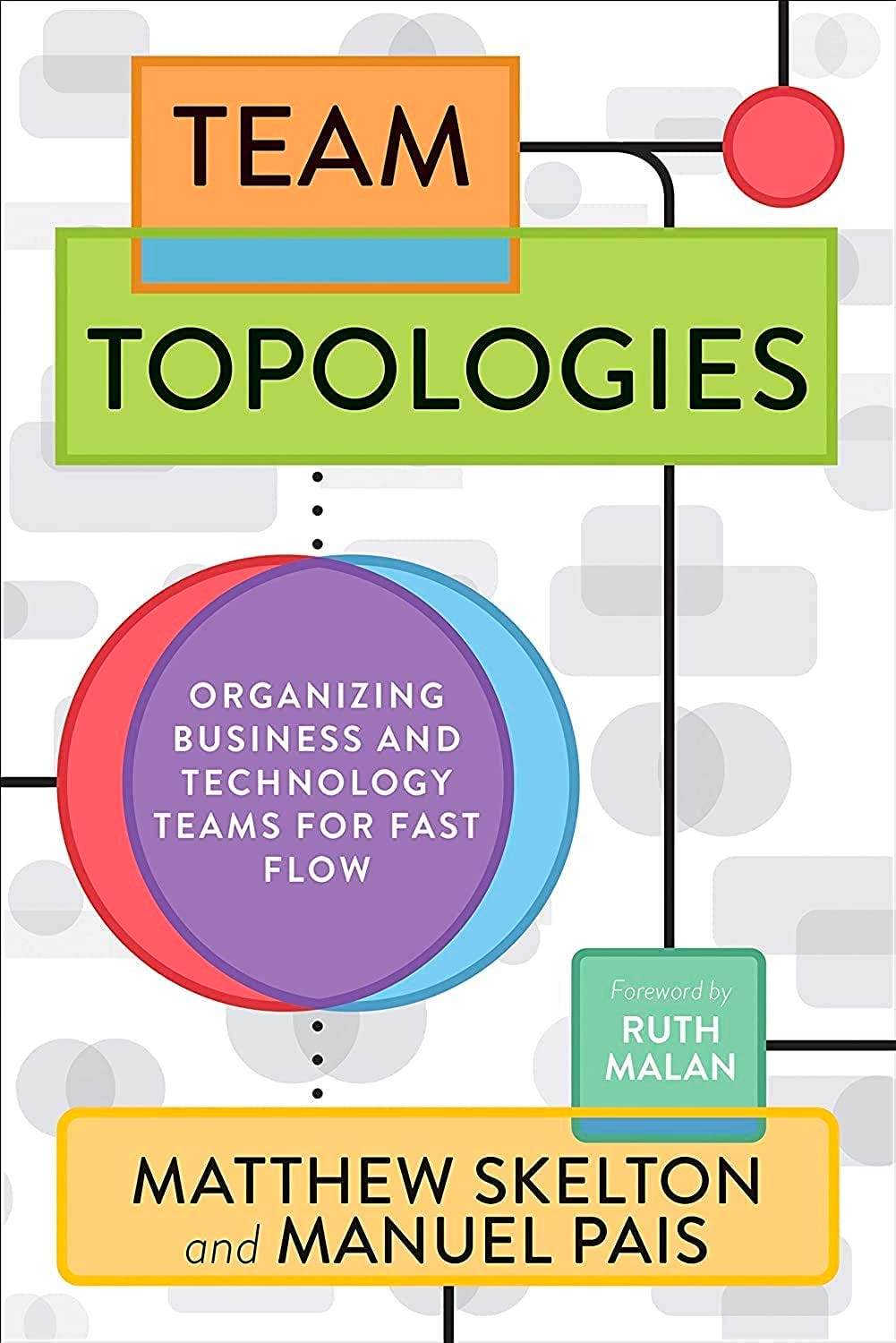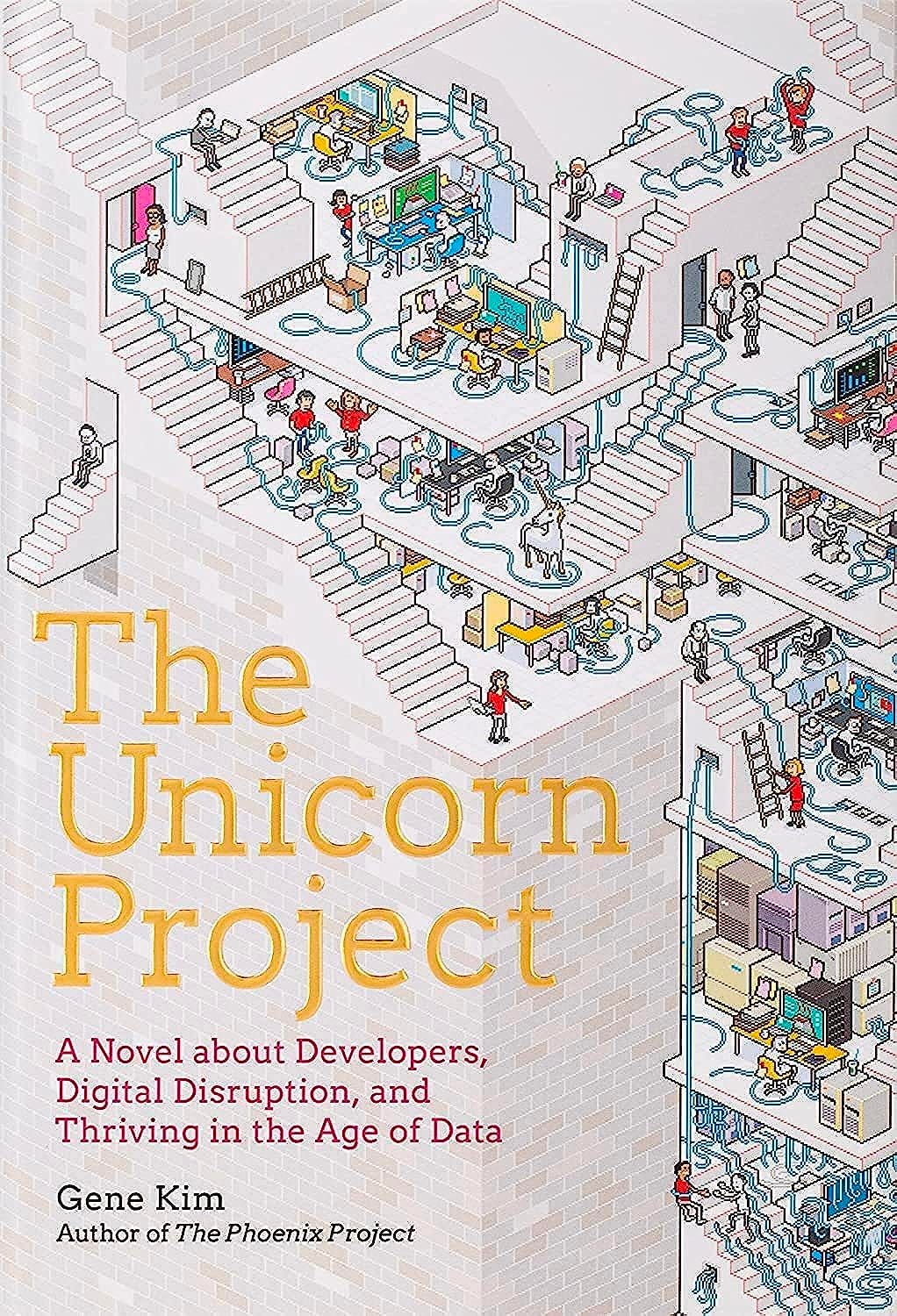Back in 2023, we decided to play librarian and put together a reading list for anyone navigating the wild world of IT/OT convergence—whether you're a manager, team lead, product owner, or just someone trying to bridge the gap between these two domains. Not about technology (there’s enough noise about that already), but about the real challenges: leadership, team structures, and organizational change.
That first edition was well received, so here we are again with version 2.0!
Why are we not listing books on technology, Generative AI, or the latest IT buzzwords? Because in our experience, the bottleneck in IT/OT convergence isn’t the lack of tech—it’s the lack of strategy. You don’t need yet another book explaining why “AI will revolutionize everything” when your real challenge is getting your teams to work together effectively.
In this second release, we’re continuing our mission: building a practical, no-nonsense book library filled with titles that helps you navigate the messy reality of digital transformation. Expect recommendations that focus on leadership, collaboration, and making change actually happen.
So, grab a coffee, put your feet up, and let’s dive into the books that will make you a better IT/OT leader—not just another person chasing the next tech trend.
Wiring the Winning Organization
By Gene Kim and Steven J. Spear, ISBN: 978-1950508426, Buy on Amazon
This book is all about strategies for organizational success and about creating a harmonious and effective workplace. The authors' insights on leadership and operational excellence are both profound and practical, offering readers a roadmap to transform their organizations into more efficient, innovative, and collaborative environments. This book is a must-read for anyone looking to elevate their organization's performance and cultivate a winning culture. The authors do so by introducing three simple concepts:
Slowify (i.e., "slow down to speed up") to make it easier and more forgiving to solve problems.
Simplify (i.e., partition problems in time and space) to split apart large problems to make them easier to solve, most likely in parallel.
Amplify (among other things, weak signals of failure) to make it obvious that problems need to be solved and that they were successfully resolved
One review on Amazon stated “This is The Toyota Way for this age” and we definitely agree.
Steven Spear was featured recently in the podcast “Art of Making” by EIT Manufacturing, which we highly recommend to watch:
Flow Engineering
By Steve Pereira and Andrew Davis, ISBN: 978-1950508457, Buy on Amazon
This recent book builds upon the foundations of Value Stream Mapping (this is an effective - but now widely known - methodology to visualize and resolve disconnects, redundancies and gaps in your value delivery process) and the Toyota Production System. It is a practical guide to align teams (in our case IT and OT teams).
You already know our IT/OT Cooperation Models (based on Team Topologies, see below). Flow Engineering is a great basis for how these teams align and work internally!
Here is a perfect 30 minute intro by Steve at Fast Flow Conference:
Team Topologies
By Matthew Skelton & Manuel Pais, ISBN 978-1942788812, Buy on Amazon
The day OT systems got connected to IT systems, cooperation was needed. But what is cooperation? How do you describe it? Enter Team Topologies, a way to think and talk about teams and how they interact introduced by Matthew Skelton and Manuel Pais. This one was in our previous list, but it simply needs to stay in 🙂
We used the concepts from this book for our 8 IT/OT Cooperation Patterns and later also in our field guide. We presented these concepts last year at the Enterprise Technology Summit, a conference organized by IT Revolution (they published this article about our work).
Watch this short video if you are interested the basics behind Team Topologies:
Industrial DevOps
By Suzette Johnson and Robin Yeman, ISBN 9781950508792, Buy on Amazon
Industrial DevOps explores how DevOps and agile principles can be applied to the development of cyber-physical systems—smart, connected products like cars, dishwashers, industrial robots, or even rockets. While DevOps has traditionally focused on software development, this book extends those concepts into the world of hardware-software integration, tackling the unique challenges of developing physical products that rely on embedded software and complex supply chains.
For those of us working in IT/OT convergence, this book is an interesting complement to our usual focus. While we often discuss digitalization in manufacturing—the process of assembling these smart products—this book shifts the lens to the design and development phase. It highlights how integrating DevOps practices early in the lifecycle can improve speed, collaboration, and product quality, ensuring that software and hardware evolve together. If you're looking for a deeper understanding of how agile and DevOps thinking can transform industrial product development, this book is a valuable read.
The other side of innovation
By Vijay Govindarajan and Chris Trimble, ISBN 978-1422166963, Buy on Amazon
Most organizations are structured to maintain efficiency, reliability, and predictability—whether in IT, OT, or any other function. However, this same structured approach creates an inherent resistance to innovation. Digital transformation, by nature, is disruptive, yet industries such as manufacturing, utilities, and pharmaceuticals are built on repeatability and proven methods. Their success depends on delivering the same quality beer, clean water, or precise medication dosage every time. Even in IT, the focus is often on keeping systems stable rather than experimenting with new technologies. This tension between operational stability and innovation is a fundamental challenge that organizations must address to remain competitive.
In The Other Side of Innovation, the authors argue that simply generating ideas is not enough—true innovation requires structured execution. Many companies appoint innovation managers, launch brainstorming sessions, or encourage employees to “think outside the box,” but these efforts often fail when they collide with the operational reality of the business. As the book highlights, “organizations are not designed for innovation; quite the contrary, they are designed for ongoing operations.” To overcome this, companies must deliberately build mechanisms that allow innovation to thrive alongside daily operations without disrupting the core business. The key is not just having good ideas but creating a system where those ideas can be tested, adapted, and implemented without being crushed by the weight of existing structures.
The Phoenix Project
By Gene Kim, ISBN 978-0988262508, Buy on Amazon
A must-read novel for anyone navigating the chaos of IT in a traditional organization! The Phoenix Project tells the story of a manufacturing company struggling with an outdated, slow, and expensive approach to IT projects—one that many in the industrial world will find painfully familiar. Enter DevOps: a movement that emerged to break down silos, improve collaboration, and accelerate delivery by bridging the gap between Development and Operations.
Now, here’s the twist: if you swap out “Development” and “Operations” for “IT” and “OT” while reading, you’ll quickly see what we see—the core principles of DevOps are just as relevant to industrial digitalization. The same bottlenecks, miscommunications, and inefficiencies that slow down IT projects are alive and well in the IT/OT space. This book isn’t just about IT; it’s about breaking down barriers, improving flow, and transforming the way work gets done—exactly what’s needed for the future of smart manufacturing and industrial automation.
For a theoretical introduction into DevOps, we advise “The DevOps Handbook”, which you can still find in our previous release of the library.
This book (and the next two) were in our previous list as well. They stay in because they are still super relevant and we regularly advise people to buy, read and enjoy them.
The Unicorn Project
By Gene Kim, ISBN 978-1942788768, Buy on Amazon
We enter the same story as the Phoenix project, but from the viewpoint of a developer. We advise it regularly to team mates/engineers and the feedback is always positive! Gene Kim introduces these five ideals: (1) Locality and Simplicity, (2) Focus, Flow and Joy, (3) Improvement of Daily Work, (4) Psychological Safety and (5) Customer Focus.
Sooner Safer Happier
By Jonathan Smart, ISBN 978-1942788911, Buy on Amazon
This book is also a perfect way to start transforming your digital teams and leadership from Industry 2.0 practices towards 4.0. Make sure to read The Phoenix Project and/or The Unicorn Project first and then jump into this one. What we like (a lot!) is that this book covers a lot of patterns and antipatterns on how to handle your transformation.
The main concept is to provide “Better Value Sooner Safer Happier”. Better refers to Quality, Sooner to Lead time and Throughput, Happier to Colleagues, Clients and even the Environment and Safer to Compliance. Focussing on those 4 blocks will lead to Value. We like the “Achieve big through small” pattern, the importance of “Hell yes People” and the differences between clear (known-knowns), complicated (known-unknowns), complex (unknown-unknowns) and utter chaotical projects.
The previous version of our library with more books can be found here:
The IT/OT Book Library: what should I read?
First things first, there are no books around IT/OT convergence (or we haven’t stumbled across them yet…) Surely, there are some books about “Industry 4.0” (and even about the hyped “Industry 5.0” buzzword), but they are (1) either sponsored by some organization trying to lure you into buying their miracle product or (2) too (or only) technology focused…
Shareable Image:














